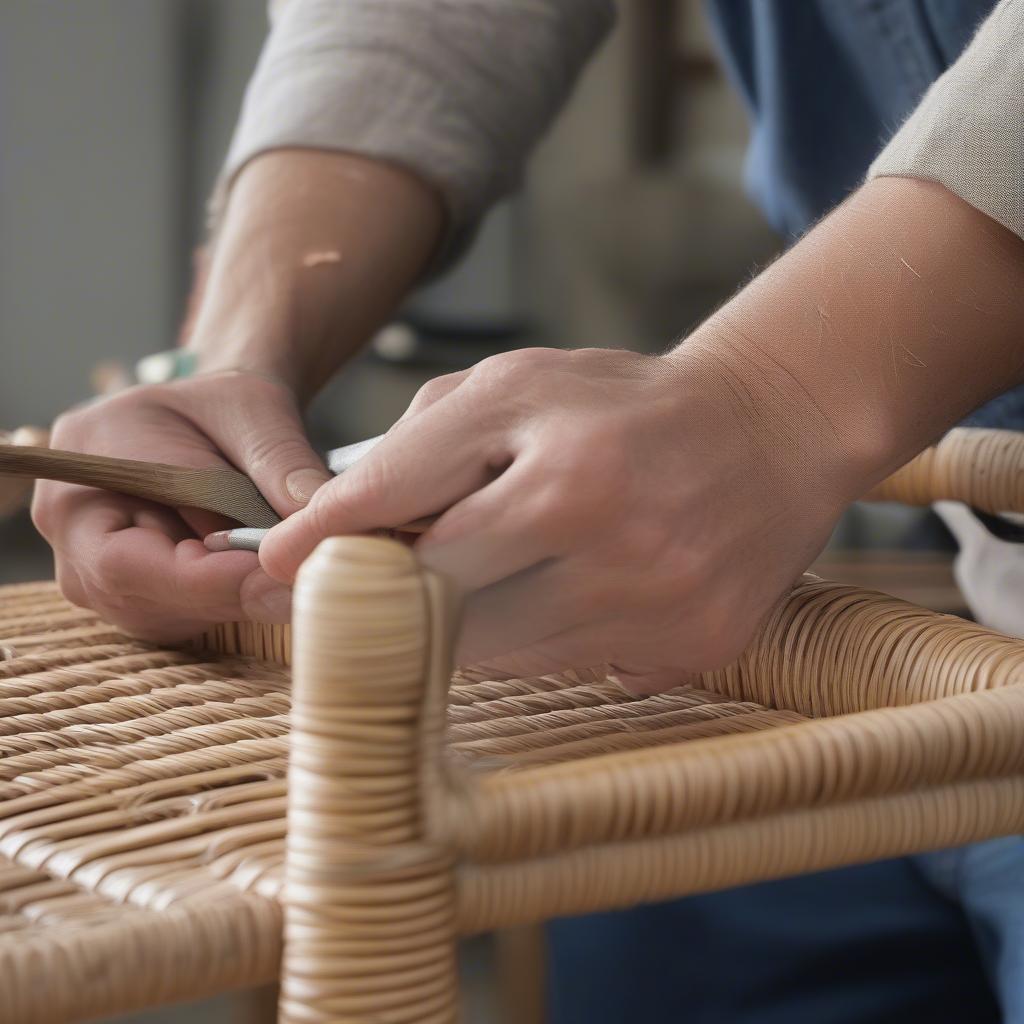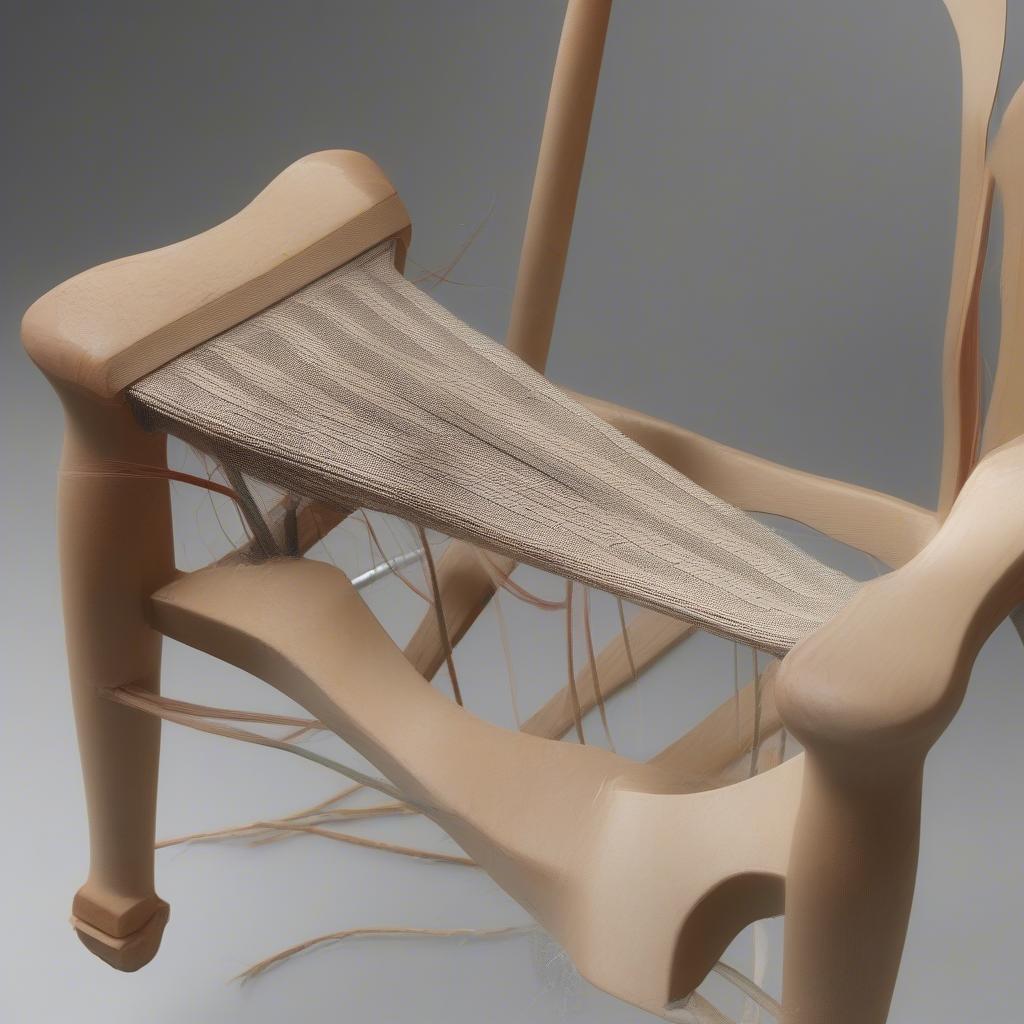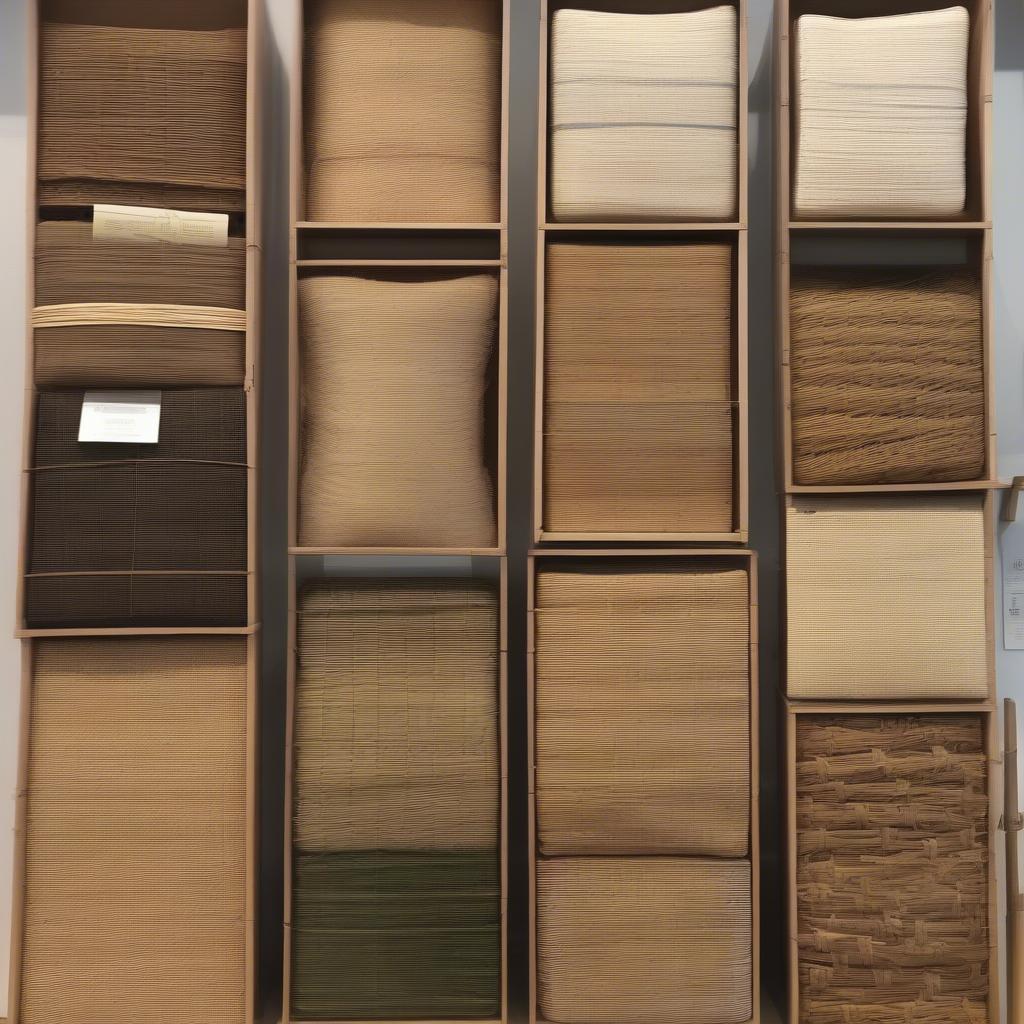Weave Chair
How to Repair a Dining Chair Seat Weave
Knowing How To Repair A Dining Chair Seat Weave can save you money and preserve the character of your beloved furniture. Whether it’s a cherished antique or a modern piece, a damaged woven seat can detract from the overall aesthetic. This guide provides a comprehensive approach to repairing various types of woven chair seats, giving you the confidence to tackle this project yourself.
 Repairing a dining chair seat weave with natural materials.
Repairing a dining chair seat weave with natural materials.
Identifying the Damage and Gathering Supplies
Before you begin your repair, assess the extent of the damage. Is it a small tear, a few broken strands, or a large section that needs replacing? This will determine the materials and techniques you’ll need. Common materials used in chair seat weaving include rattan, wicker, rush, and seagrass. weave tubular chair can also be repaired using similar techniques. Identifying the specific material used in your chair is crucial for a seamless repair. Once you’ve identified the material, gather the necessary supplies. This might include new weaving material, a sharp knife or scissors, a flat-head screwdriver, pliers, and a mallet.
Repairing Minor Damage: A Step-by-Step Guide
For small tears or breaks, you can often repair the weave without completely replacing the seat.
- Locate the broken strands: Carefully examine the weave to identify the starting and ending points of the broken material.
- Gently loosen the surrounding weave: Use a flat-head screwdriver to carefully loosen the weave around the damaged area. This will give you more room to work.
- Insert the new material: Weave the new material in, following the original pattern. Use pliers to pull the material tight and ensure a snug fit. Sometimes how to weave a metal chair can utilize similar techniques, especially if the seat uses a woven material.
- Trim and secure the ends: Once the repair is complete, trim any excess material and secure the ends with glue or by tucking them under the existing weave.
Replacing a Larger Section of Weave
If the damage is extensive, you may need to replace a larger section or even the entire seat. This can be more challenging, but with patience and the right guidance, it’s achievable.
- Remove the old weave: Carefully cut away the damaged weave, taking note of the original pattern. This will serve as your guide for the new weave. You can even use the old weave as a template.
- Prepare the frame: Ensure the chair frame is clean and free of any debris.
- Begin weaving: Start at one corner and work your way across, following the original pattern. Keep the tension consistent throughout the weaving process. For materials like jute, weaving a chair seat with jute requires a slightly different approach than rattan or wicker.
- Secure the ends: Once the weaving is complete, securely fasten the ends of the new material to the frame.
 Replacing a large section of a chair's weave.
Replacing a large section of a chair's weave.
“When working with natural materials, it’s important to remember that they can be brittle, especially if they’re old or dry,” advises Emily Carter, a renowned furniture restorer. “Soaking the new material in warm water for a few hours before weaving can make it more pliable and easier to work with.”
What if My Chair Uses Pre-Woven Panels?
Some chairs utilize pre-woven panels that are attached to the frame. Repairing or replacing these panels is usually a simpler process. If you can find a matching replacement panel, simply remove the old panel and attach the new one using appropriate fasteners. weave rope for chair walmart might be a good starting point if you need to find replacement materials.
How Do I Choose the Right Weaving Material?
Choosing the correct material is essential for a successful repair. Consider the original material, the style of the chair, and your budget. Rattan and wicker are popular choices for their durability and versatility. Rush and seagrass offer a more rustic look. For traditional cane chairs, understanding chair cane weaving is paramount.
 Selecting the appropriate weaving material for chair repair.
Selecting the appropriate weaving material for chair repair.
“Matching the original weave as closely as possible is key for maintaining the chair’s authenticity,” adds John Miller, a master weaver with over 30 years of experience. “However, don’t be afraid to experiment with different materials and patterns to create your own unique style.”
Conclusion
Repairing a dining chair seat weave might seem daunting at first, but with patience and attention to detail, it can be a rewarding DIY project. By following these steps and using the right materials, you can restore your chair to its former glory and enjoy it for years to come. Remember, how to repair a dining chair seat weave hinges on careful planning and execution.
FAQ
-
What is the easiest weaving material to work with for beginners? Rattan is often recommended for beginners due to its flexibility and durability.
-
Can I paint my newly woven chair seat? Yes, you can paint the woven seat once it’s dry and secure.
-
Where can I buy weaving materials? Craft stores, online retailers, and specialty furniture supply stores often carry a variety of weaving materials.
-
How long does it take to weave a chair seat? The time required depends on the size of the seat, the complexity of the pattern, and your experience level.
-
What tools do I need for weaving? Common tools include a flat-head screwdriver, pliers, a sharp knife or scissors, and a mallet.
-
How can I prevent future damage to my woven chair seat? Avoid placing heavy objects on the seat and protect it from excessive moisture and sunlight.
-
What if I can’t find a matching pre-woven panel for my chair? Consider weaving a new seat yourself or consulting a professional furniture restorer.
If you need further assistance, please contact our 24/7 customer service team at Hotline: +84 388 951 999, or visit us in Hanoi, Vietnam or Tech Avenue, Suite 12, San Francisco, CA 94105, USA.
